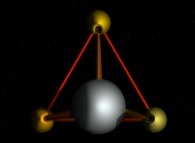Question (05/03/2023):
Write a letter of motivation regarding my candidacy for the French presidential elections of 2027.
| Answer (05/03/2023):
Dear French citizens, I am writing to express my candidacy for the French presidential elections of 2027.
I firmly believe that our country needs new leadership to tackle the challenges we face.
As a committed French citizen, I have closely followed the political and social developments in our country in recent years.
I have also paid close attention to the aspirations and concerns of the French people, who are looking to regain a sense of national unity and solidarity.
My candidacy is based on an ambitious vision for France that takes into account the economic, social, and environmental challenges of our time.
I pledge to work with all stakeholders in society to build a fairer and more prosperous future for all French citizens.
I am confident that my education and experience prepare me to assume the responsibilities of the presidency.
I have gained valuable professional experience in both the private and public sectors, including positions of leadership,
and I have developed skills in management, leadership, and negotiation.
I am also deeply committed to social and environmental causes and have been working with NGOs and other organizations
to promote more just and sustainable public policies.
Finally, I am convinced that France must be a major player on the international stage,
particularly in building a more peaceful and cooperative world.
I have worked with international organizations and foreign partners to promote cooperation and dialogue.
If you entrust me with your vote, I pledge to put all of my skills and energy into serving France and the French people.
Together, I am confident that we can build a better future for all. Thank you for your attention and support. Sincerely,
[Your name]
|
